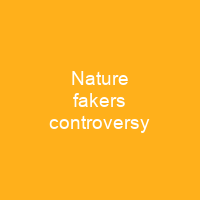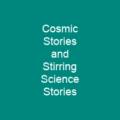The Nature Fakers Controversy: A Literary Clash of Sentiment and Science
Imagine a world where the lines between fact and fiction blur so much that even a President gets involved in a literary debate. That’s exactly what happened during the early 20th century with the nature fakers controversy, an intriguing clash between science and sentiment in popular nature writing.
The Birth of a Controversy
It all began when new literary movements started emphasizing sympathetic and individualistic animal characters. Works like Wild Animals I Have Known (1898) by Ernest Thompson Seton and William J. Long’s stories gained immense popularity, but they also sparked a heated debate.
Was this new genre of nature writing truthful or just a form of ‘yellow journalism of the woods’?
The Critics and Their Arguments
Naturalist John Burroughs was one of the first to raise his voice against these writers, labeling them as “nature fakers.” He criticized Seton, Long, and Charles G.D. Roberts for fabricating details about wildlife in their stories.
“True as romance, true in their artistic effects, true in their power to entertain the young reader, they certainly are but true as natural history they as certainly are not,” Burroughs wrote in his essay “Real and Sham Natural History.”
The Role of Instinct vs. Human-like Intelligence
A key point of contention was the role of instinct versus human-like intelligence in animals. Burroughs, along with many scientists of the day, believed that animals were governed by instinct rather than instruction or intuition.
Long, on the other hand, questioned this notion and wrote stories that depicted animals as noble and sympathetic beings. He even cited examples like muskrats bandaging their wounds with tree resin to support his claims.
The Public Feud
The debate quickly escalated into a six-year public feud between scientists and writers. President Theodore Roosevelt, known for his love of nature, eventually sided with Burroughs and popularized the term “nature fakers.”
“We who believe in the study of nature feel that a real knowledge and appreciation of wild things, of trees, flowers, birds, and of the grim and crafty creatures of the wilderness, give an added beauty and health to life,” Roosevelt wrote in his article “Nature Fakers.”
The Impact on Nature Writing
The controversy had far-reaching effects. It led to a new genre characterized by sympathetic and individualistic depictions of wildlife, which was at odds with scientific fact and realism. This genre influenced the growing animal welfare movement and wildlife conservation efforts.
Notable nature writers like Mabel Osgood Wright and Ernest Thompson Seton sought to gain sympathy for wild animals through their positive portrayals in works such as Wild Animals I Have Known.
The Lasting Legacy of the Controversy
The term “nature fakers” remained, describing those who fabricated or sentimentalized nature. The debate highlighted the tension between scientific accuracy and emotional appeal in nature writing.
Was it about truth or entertainment?

The nature fakers controversy marked a pivotal moment in the history of nature writing, showing how deeply intertwined science and literature can be. It continues to resonate today as we navigate our relationship with the natural world.
You want to know more about Nature fakers controversy?
This page is based on the article Nature fakers controversy published in Wikipedia (retrieved on November 30, 2024) and was automatically summarized using artificial intelligence.







